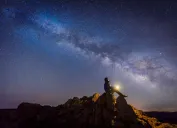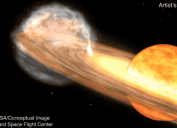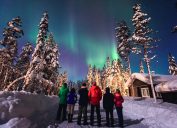Meteor Shower Will Light Up the Sky With Bright Fireballs Next Week—How to See It
The Lyrids are one of the oldest recorded annual celestial events.
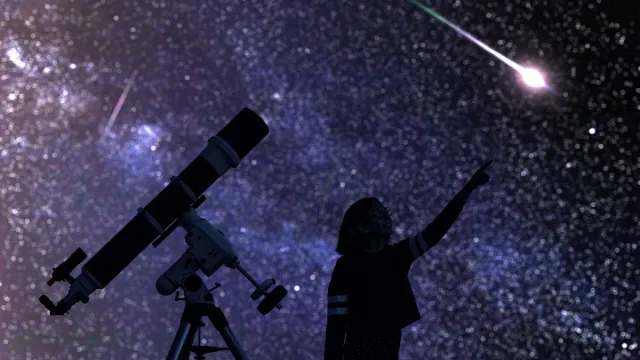
This month has already us given plenty of reasons to look up at the sky. So far, there's been a historic total solar eclipse, a rare "Mother of Dragons" comet passing by Earth, and a strong showing of the Northern Lights in some uncommon places. And now, stargazers can look forward to yet another treat as the Lyrids meteor shower will light up the skies with bright fireballs when it makes its return next week. Read on to learn how you can see it and why this particular spectacle is so unique.
RELATED: New Star Will "Explode" in the Night Sky—How to See the "Once-in-a-Lifetime" Event.
The annual Lyrids meteor shower is about to kick off again.
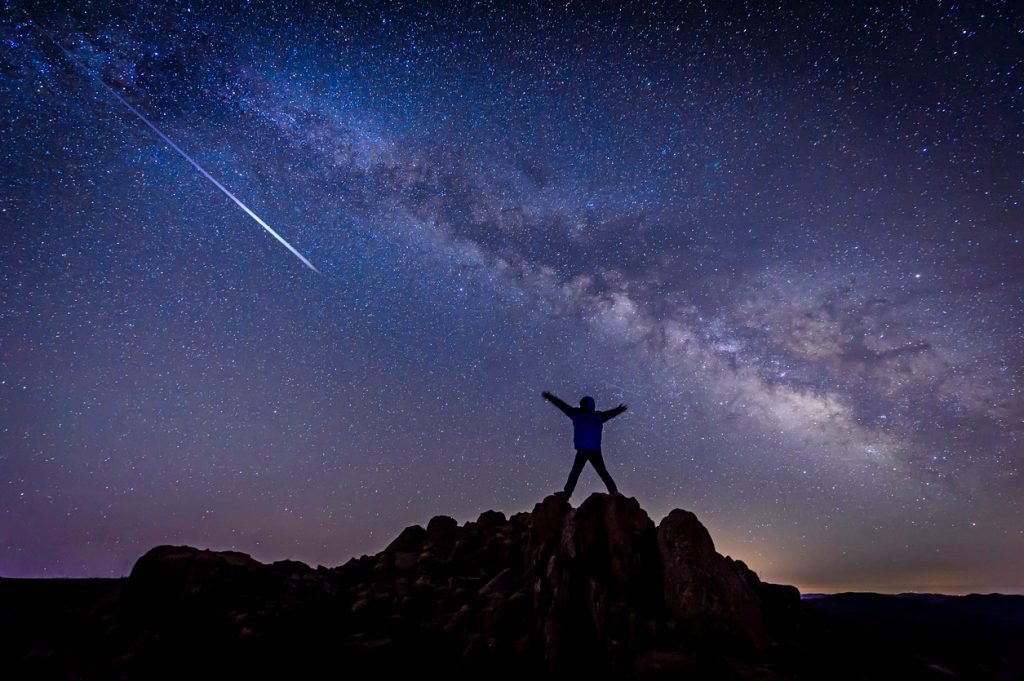
Next week marks the beginning of the Lyrids meteor shower, which often stands out as one of the most exciting of the year, according to NASA.
Similar to many other meteor showers, this event occurs when Earth passes through the debris trail of Comet C/1861 G1 Thatcher, which orbits the sun once every 415.5 years. However, while the parent comet was only discovered in 1861, the Lyrids themselves have made several appearances over thousands of years, with the first recorded sighting taking place in China in 687 BCE.
RELATED: 8 Best Places to See the Northern Lights in 2024.
These meteors tend to have a more striking appearance in the sky.
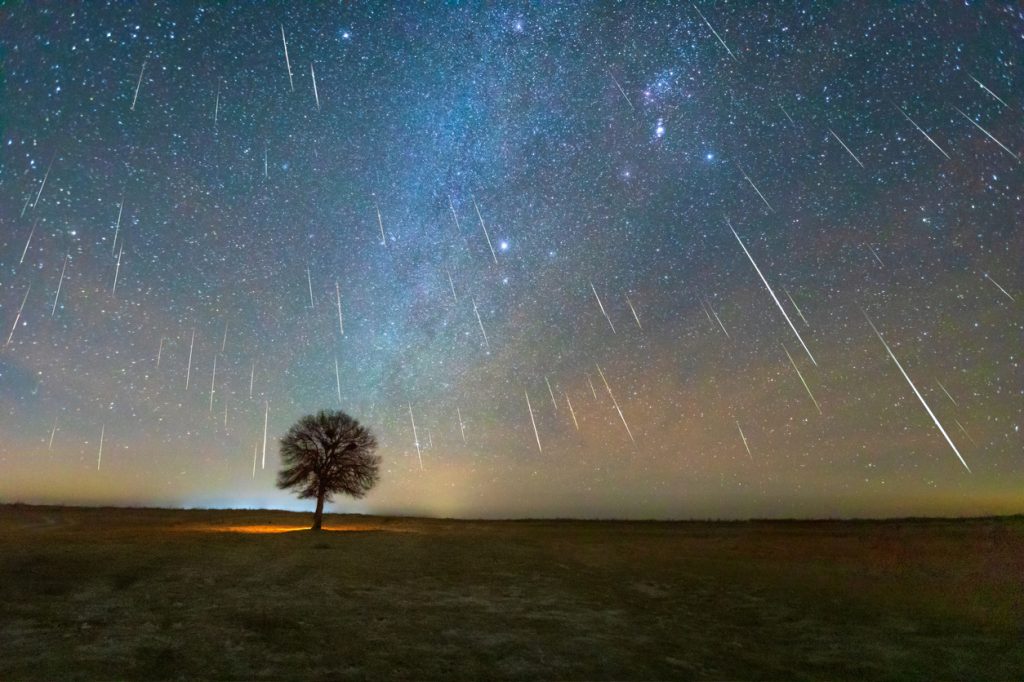
Each meteor shower tends to have its own characteristics and trademarks, and the Lyrids are no different. Namely, the dust left behind by Comet Thatcher typically creates "fast and bright meteors" when the particles enter the Earth's atmosphere.
"Lyrids don't tend to leave long, glowing dust trains behind them as they streak through the Earth's atmosphere, but they can produce the occasional bright flash called a fireball," NASA explains on its website.
While experts don't consider the meteor shower to be the busiest of the year, it normally averages about 10 to 20 "shooting stars" per hour during its peak nights. However, at some points in history, it has surged to more than 100 per hour, including in 1945 in Japan and in 1982 in the U.S., per the space agency.
RELATED: 8 Amazing Things You Can See in the Night Sky Without a Telescope.
These are the best nights to sit outside and watch the Lyrids.
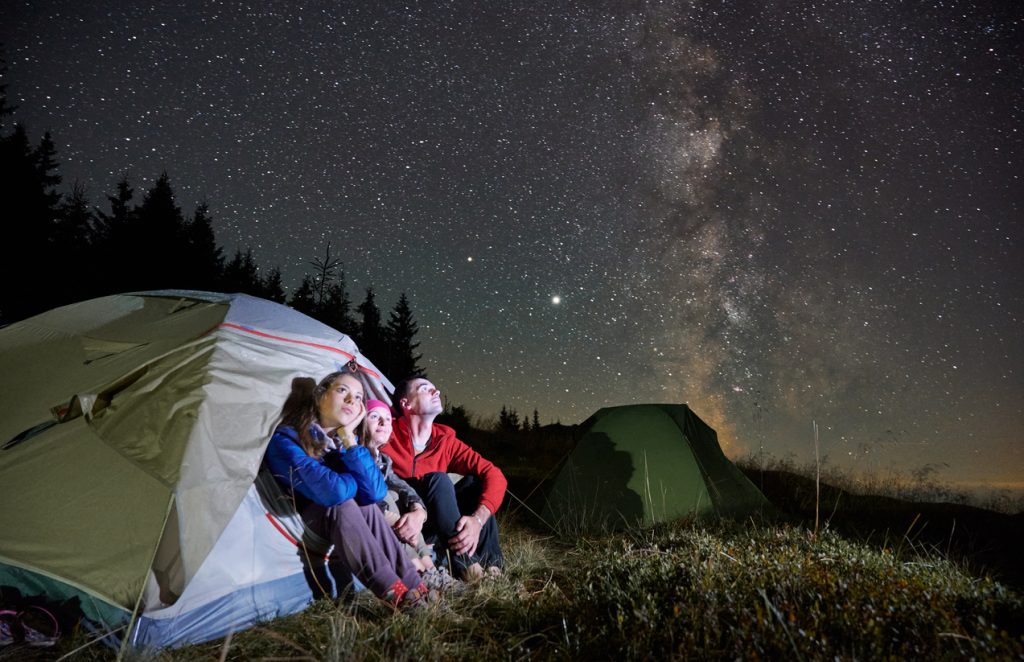
This year, the Lyrids will kick off their annual appearance beginning on the night of April 16, Space.com reports. They will then start to increase in number through their expected peak on April 22 before they begin to wind down and finish on the night of April 25.
You might not have to stay out too late to catch a glimpse of them, either. The first meteors will usually begin to appear around 10:30 p.m. local time and continue until just before dawn, Bill Cooke, a NASA meteor expert, told Space.com.
Make sure you get far enough away from bright lights if you're planning on catching them.
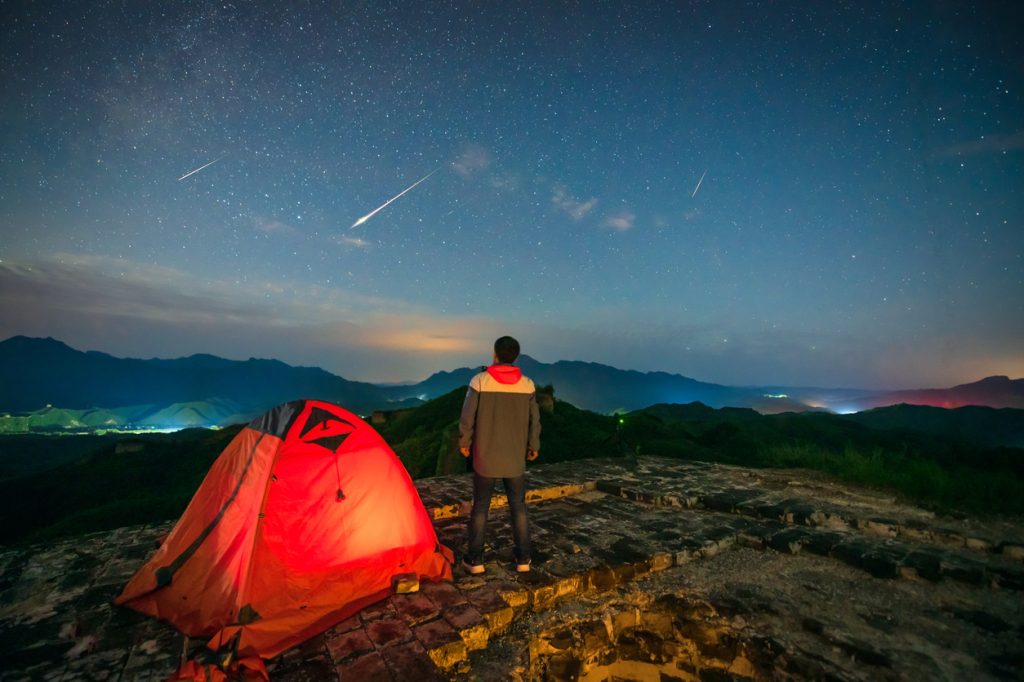
What's great about setting out to watch a meteor shower like the Lyrids is that you don't even need a telescope or binoculars to do it. But if you're hoping to get a better view, experts say you should still head away from bright cities or street lights that can make it harder to see the those bursts in the sky.
Unfortunately, one of the worst light sources might be inescapable during this year's shower. That's because a nearly full moon will rise in the sky during the Lyrids' peak and make it harder to see some of the more faint meteors, Space.com reports.
Still, anyone planning on sticking it out should bring a blanket or sleeping bag to keep warm during the chilly spring nights, NASA suggests. You should also lie down with your feet facing east and try to get a view of as much of the sky as possible while lying on your back. And be sure to give yourself up to 30 minutes for your eyes to adjust to the darker conditions.
- Source: NASA: Lyrids
- Source: NASA: C/1861 G1 (Thatcher)







